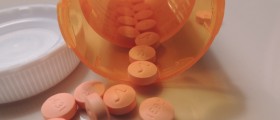Imovane
Imovane (Zopiclone) is a depressant of the central nervous system (CNS) and it is used to treat sleeping problems. This medication is designed to help with short-term insomnia cases, and it is used for treatment that lasts up to 2 weeks. Imovane will help the patient to fall asleep faster and sleep without waking up through the night.
Warning
Zopiclone should not be used to treat sleeping disorders that last more than 10 days. Consult your doctor if you have long-lasting insomnia because it might point to another illness.
The treatment should be stopped if a doctor recommended so, do not try to stop the treatment instantly and by yourself. Stopping the medication instantly may lead to withdrawal symptoms.
Insomnia might return temporarily, for a night or two, after you ended the therapy. This is a normal process and you shouldn’t worry.
Do not use Imovane while driving or operating machinery. This medication is known to cause drowsiness and dizziness and you should be careful when on Imovane treatment. The Elderly are especially susceptible to these CNS side effects.
Alcohol and some medication that have the same CNS depressant effects may potentiate the effects of Imovane worsen the drowsiness, and potentially cause breathing problems and coma. Those medications include antihistamines, sleeping tablets, sedatives, tranquilizers, pain killers, barbiturates, anesthetics, and muscle relaxants. Your doctor should be aware if you are using any of the above-mentioned medications.
- In sleep laboratory studies of one to 21-day duration in man, zopiclone reduced sleep latency, increased the duration of sleep and decreased the number of nocturnal awakenings. Zopiclone delayed the onset of REM sleep but did not reduce consistently the total duration of REM periods. The duration of stage 1 sleep was shortened, and the time spent in stage 2 sleep increased. In most studies, stage 3 and 4 sleep tended to be increased, but no change and actual decreases have also been observed. The effect of zopiclone on stage 3 and 4 sleep differs from that of the benzodiazepines which suppress slow wave sleep. The clinical significance of this finding is not known.
- With hypnotic drugs, the duration of hypnotic effect and the profile of unwanted effects may be influenced by the alpha (distribution) and beta (elimination) half-lives of the administered drug and any active metabolites formed. When half-lives are long, the drug or metabolite may accumulate during periods of nightly administration and be associated with impairments of cognitive and motor performance during waking hours. If half-lives are short, dose is ingested, and carry-over effects related to sedation or CNS depression should be minimal or absence.
- During nightly use and for an extended period, pharmacodynamic tolerance or adaptation to some effects of benzodiazepines or benzodiazepine-like hypnotics may develop. However, in two sleep laboratory studies involving 17 patients, there was an absence of tolerance with zopiclone for treatment periods of more than 4 weeks.
- Zopiclone is rapidly and well absorbed. Bioavailability is more than 75%, indicating the absence of a significant first-pass effect. After the administration of 3.75 and 7.5mg doses, peak plasma concentrations of 30 and 60 ng/mL, respectively were reached in less than 2 hours. Absorption was similar in males and females. Repeated daily administration of 1 7.5 mg oral dose for 14 days did not change the pharmacokinetic characteristics of zopiclone and did not lead to accumulation.
- Zopiclone is extensively metabolized by three major pathways; only about 4 to 5% of the drug is excreted unchanged in the urine. The principal metabolites are the N-oxide derivative (X12%) which has weak pharmacological activity in animals, and the N-desmethyl metabolite (X16%) which is pharmacologically inactive. Their apparent half-lives evaluated from the urinary date are approximately 4.5 and 7.4 hours, respectively.
- Zopiclone may produce additive CNS depressants effect when co-administered with alcohol, sedative antihistamines, anticonvulsants, or psychotropic medications which themselves can produce CNS depression. Compounds that inhibit certain hepatic enzymes (particularly cytochrome P450) may enhance the activity of benzodiazepines and benzodiazepine-like agents. Examples include cimetidine or erythromycin.
Any change of your mental status, confusion, irritability, anxiety, unusual thoughts, hallucination, or even suicidal ideas should be reported to the doctor. Be aware that these changes may look like you are drunk and you will behave in such a manner.
Overdose
If the medicine provoked clumsiness, mood changes, severe dizziness, weakness, abnormal sleepiness, or unconsciousness the reason could be the overdosed Imovane. In those cases seek urgent medical help.
Imovane Side Effects
The most common side effects caused by Imovane are dizziness, anxiety, clumsiness, and coordination problems. These changes are often seen in older patients. Also, patients frequently experience dry mouth, heartburn, appetite changes, digestion problems, constipation, and weight loss. Some of the Imovane patients had vision problems and speaking problems.
The less common adverse effects are serious cases of drowsiness, breathing problems, chest pain, heartbeat irregularities, and excess sweating. Elderly patients treated with Imovane may suffer from memory problems, agitation, increased salivation, shaking of the limbs, and vomiting. Some of the patients have reported bitter taste, bad breath, and coated tongue.
Also, there were cases of muscle cramps and pain, seizures, and nervousness, and some patients had more problems sleeping than before the therapy.

















Your thoughts on this
Loading...